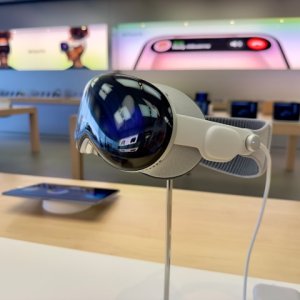The Challenge of Diabetes Management in the XXI Century

STORY INLINE POST
Q: How is SocialDiabetes creating a solution that eases the journey for people with diabetes?
A: SocialDiabetes was created by a Type 1 diabetes patient, who after getting diagnosed realized the shortcomings in diabetes management. Diabetes is a disease of data. Correlating blood glucose with carbohydrates and treatment is essentially hacking how our body works.
A patient with diabetes has to make key decisions several times a day. Managing the disease requires much more than taking a pill; it forces them to transform their entire lifestyle and make micro-decisions every moment. The patient needs to understand how the body and diabetes work and needs to have personalized information on the status of vital signs. There is no public or private health system that can continuously support the diabetic patient. The only authority powerful enough to combat diabetes are the patients themselves.
SocialDiabetes has put digital therapy in the patient's hands. It comprises a mobile application with a functional suite to support decision-making, helping patients control their diabetes. It measures sugar levels and other clinical indicators through universal integration with devices, while simultaneously giving them the opportunity to have a normal and flexible life. Data management and artificial intelligence allow SocialDiabetes to provide patients with functionalities to take control of their health through highly personalized information, allowing them to lead a peaceful and healthy life.
Q: How has SocialDiabetes grown its presence in Mexico?
A: Our first pilot projects were undertaken in the UK’s National Health System (NHS). Since acquiring UK certification, we have been consolidating in the EU by obtaining the CE certificate of medical device and the American FDA. We have contracts with the manufacturers of glucometers and continuous glucose monitors. Through them, we bid for public tenders in the EU. We also offer our remote patient management platform to hospitals, clinics and health systems in Europe and Latin America.
We have more information from Mexico than from any other country because the country has a high incidence of diabetes. Our database for Mexico grew without direct intervention, marketing or promotion. As a result, in 2017, we formally entered this market with a local team and operations. In Mexico, we received investment from a prestigious local fund leader in the venture capital ecosystem. We work with the Salvador Zubiran National Institute of Medical Sciences and Nutrition (INCMNSZ) and with various clinics specializing in Diabetes. The pharmaceutical industry in the midst of the digital revolution are also SocialDiabetes customers, such as Sanofi Mexico who bet on our technology for their patient support program Entregando Salud Pacientes (Delivering Health to Patients).
During the pandemic, the Development Bank of Latin America (CAF) invested directly in SocialDiabetes and five other Latin American companies out of 200 applicants. We are using the investment to expand throughout the region.
Q: How do you promote and secure patient and doctor engagement within the platform?
A: One of the characteristics and competitive advantages of SocialDiabetes is that it is hardware agnostic. We are not exclusively associated with any medical device; we capture data from any device or wearable, allowing patients to avoid losing data when switching devices because their clinical history follows them. Such solutions are of great value for fragmented health systems such as Mexico's, which has many health institutions of different types. SocialDiabetes is giving patients the strength to transform the system.
As diabetes is not an isolated disease, it was important to also integrate the patient's family. Thus, we generated a mirror account where the patient’s relatives can monitor their activity. This has benefited patients and their families, especially in the case of young children or older adults.
We also developed a telemedicine platform so the health system could remotely manage patients using the data stored in apps. This information is uploaded to the cloud and can be used by health systems to rationalize resources and make personalized and proactive decisions.
Q: How did the technological boom that followed the pandemic change the reception of these types of tools?
A: During the pandemic, there was a boom in nonclinical technology, which was neither certified nor protected. During a crisis, the use of informal platforms is understandable but it is not a long-lasting solution. The most robust and experienced platforms, which have been validated and certified, and which have clinical evidence and real user satisfaction (patients and professionals) are the ones that are set to transform healthcare systems.
When working in Mexico, we observed a great dissonance between what citizens expect and how their health systems are able to transform. Health systems are still reluctant to switch to the digital transformation, while citizens are willing and more than ready. From what we are observing, the patient is the one pushing public and private health systems to adopt these technologies.
Q: What is the purpose of the incoming SocialDiabetes Community?
A: This community, one of the services we are introducing in the short term, is the result of our upcoming project the Diabetes Academy. As a technology provider, we have accumulated a great deal of knowledge about patient behavior and needs and we have recognized that education is essential. Without education, patients are not capable of taking advantage of the available tools for their care, such as technology or pharmaceuticals. Sometimes patients fail to understand how diabetes impacts their health.
Alongside the Diabetes Academy, we will provide patients with a 90-day course about the illness, teaching them about glucometers, SocialDiabetes, treatment management, carbohydrates, glycosylated hemoglobin, eating habits, physical activity, stress and more about diabetes day-to-day management. This space is virtual and will function as a social network where patients can help each other and create a community to share good practices among themselves.
Q: How is SocialDiabetes allying or working with other actors in the industry such as pharmaceutical companies or hospitals to integrate an integral approach to diabetes?
A: We follow a B2B model, offering our platform to health systems to digitize their programs and encourage their patients' adherence to treatments. We are offering this technology to several governments for mass distribution among the population. We offer our products and services to the pharmaceutical industry, insurance companies and corporate employers.
SocialDiabetes is a Medical digital platform that connects physicians with patients, to deliver personalized care and optimized outcomes. With more than 300k users, SocialDiabetes is considered a Digital Therapy that provides efficient diabetes management at scale.








 By Miriam Bello | Senior Journalist and Industry Analyst -
Mon, 08/15/2022 - 09:22
By Miriam Bello | Senior Journalist and Industry Analyst -
Mon, 08/15/2022 - 09:22
















